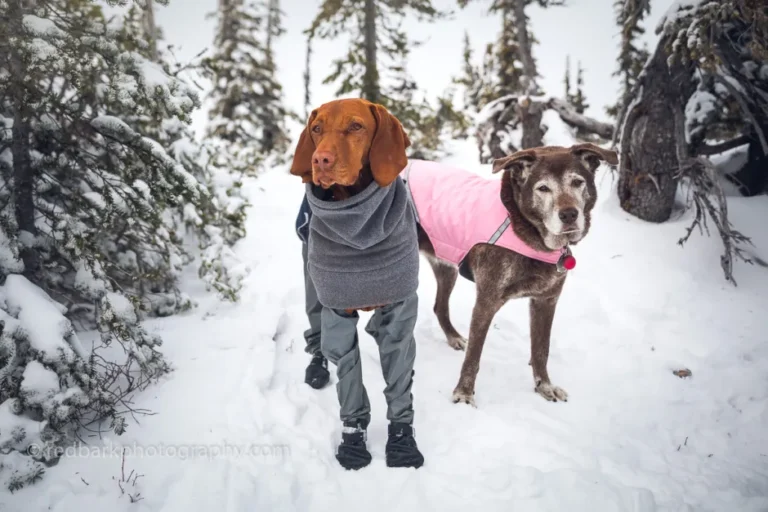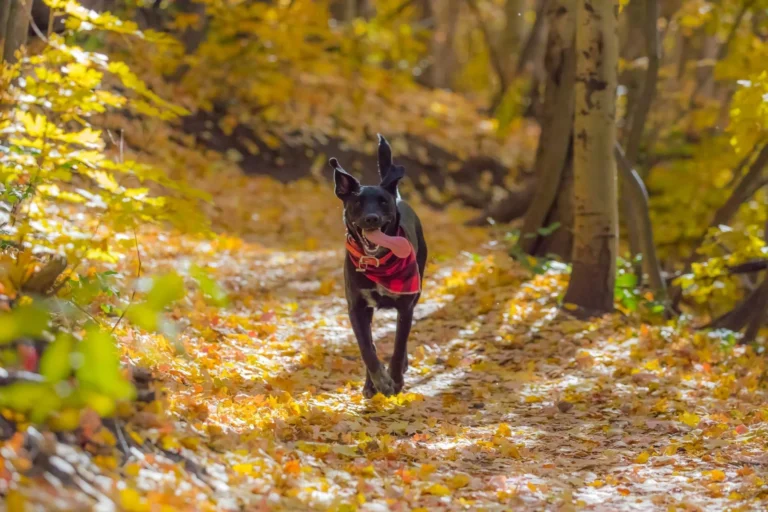Dogs thrive in adventures, especially during summer hikes when they can explore the great outdoors by your side. However, to ensure a safe and enjoyable experience for both you and your furry friend, it’s important to be well-prepared. This blog post will guide you through four vital steps that will help you and your dog navigate the trails with ease. From hydration to proper gear, your summer hiking excursions can become unforgettable memories with the right tips in mind.
Tailoring the Trail to Your Dog’s Needs
Each dog is unique, and tailoring the hiking experience to suit your companion’s individual needs will enhance the adventure for both of you. Take time to consider your dog’s breed, age, size, and personality when choosing trails. Adjust your route to include enough breaks, shade, and water sources. Keeping these factors in mind ensures a safer and more enjoyable hike, allowing your furry friend to thrive in the great outdoors alongside you.
Assessing Your Dog’s Physique and Endurance
Evaluating your dog’s build and stamina is imperative for planning a suitable hike. If your dog is small or has short legs, long or steep trails may lead to fatigue or discomfort. For senior dogs, it’s best to stick to flat, leisurely routes. For young, active breeds, choose tougher trails that will challenge them and burn off energy. Tailor the hike length and difficulty to match your dog’s physical capabilities for a positive outdoor experience.
Choosing Pet-Friendly Hiking Trails
Finding trails that are welcoming to pets sets the stage for a great experience. You’ll want to identify locations designated as pet-friendly, which often have amenities like water stations, shaded areas, and dog waste disposal bins. Websites and apps such as AllTrails and BringFido can help you locate these trails while providing user reviews that highlight their suitability for dogs. Consider leash laws and off-leash areas, too, ensuring your pup has the freedom to roam safely while adhering to local regulations.
When identifying trails, focus on those that allow dogs and assess their terrain and accessibility. Look for trails with soft ground or grass instead of gravel, which can be tough on your dog’s paws. Always check the weather conditions as well; hot asphalt can burn tender paw pads. Parks with multiple trail options might offer familiar pathways that you can explore for different experiences, making each hike fresh and exciting for your furry buddy. Aim for shorter trails on hot days to prevent overheating and fatigue, keeping your adventure enjoyable and safe.
Essential Gear for Safe and Enjoyable Adventures
Choosing the right gear can significantly enhance your summer hiking experience with your dog. Opt for lightweight, breathable fabrics that wick moisture and provide sun protection. Your dog should wear a well-fitted harness for comfort and control. Additionally, a sturdy leash is a must to keep your dog close, especially on busy trails. For both of you, consider investing in durable hiking boots to protect your feet and provide excellent traction on rocky terrains.
Must-Have Equipment for You and Your Dog
Equipping yourself and your dog with the right tools enhances your hikes. Essential gear includes a comfortable pack for you that can hold your importants like water, snacks, and a first-aid kit. For your dog, a collapsible bowl and a dog backpack can carry their food and toys. Also, don’t forget a safety light or reflective gear, especially for early morning or evening hikes. Any of these items can make a significant difference in your outdoor experience.
Hydration and Nutrition Tips for Hiking with Dogs
Keeping your dog hydrated is just as important as ensuring you stay refreshed. Offer water often, particularly on hot days. Don’t rely solely on streams or lakes; carry enough water to last your entire hike. It’s advisable to bring high-protein treats or dog-friendly snacks to sustain energy levels. Regular breaks for hydration and low-calorie treats can help keep your dog’s stamina up during longer hikes. Any dog would appreciate the extra nourishment to get through the trek.
- Carry a portable water bowl for easy access.
- Introduce your dog to trail treats gradually to avoid stomach upset.
- Monitor your dog’s behavior; excessive panting could indicate dehydration.
- Record the duration of your hikes to prevent overexertion.
- Always pack extra water in case of emergencies.
Consider your dog’s specific needs when hiking. Regular access to fresh water is vital, especially on warm days. You can also freeze water and bring it along, which will help keep your dog hydrated as it melts. Look for dog-friendly nutrition that supports their energy levels, and avoid giving them human food, as it may not sit well with their digestive systems. Any pet owner should plan meals that provide energy while remaining easy on their dog’s stomach.
- Look for lightweight, travel-friendly dog food options.
- Pack a small cooler if you anticipate a lengthy hike.
- Consider high-calorie emergency treats for longer treks.
- Monitor your dog’s body language; fatigue may require a snack break.
- Have a checklist of your dog’s dietary needs while on the go.
Mastering Trail Etiquette for Dog Owners
Every hiker plays a part in maintaining a respectful and enjoyable environment on the trails. As a dog owner, mastering trail etiquette ensures that everyone can share the outdoor experience harmoniously. This includes keeping your dog on a leash to prevent any unexpected encounters and cleaning up after them immediately. Always yield the right-of-way to hikers who may not be familiar with dogs or have their own, and ensure your dog remains calm and well-behaved during these interactions.
Keeping Your Dog Under Control in Nature
When hiking, it’s imperative to keep your dog under control at all times. Utilizing a sturdy leash not only helps manage your dog’s excitement, but also protects them from potential dangers such as wildlife or unstable terrain. Training commands like “heel” and “stay” can be lifesavers in unpredictable situations, allowing you to maintain control, and keeping your pup close while exploring the trails.
How to Handle Encounters with Other Hikers and Wildlife
Encounters with fellow hikers and wildlife can occur unexpectedly, so being prepared can make a significant difference. Always gauge the situation and assess whether to approach or maintain distance. For fellow hikers, communicate with a friendly greeting and move aside if necessary to allow them to pass. In the presence of wildlife, it’s best to keep your distance, and calmly remove your dog from the area to minimize stress on both your pet and the animals.
When approaching other hikers, always allow them to initiate interaction with your dog, as some may have allergies or a fear of dogs. If your dog is friendly and bounds towards them, a simple command to sit can help diffuse any apprehension. In wildlife encounters, maintaining a calm demeanor is key. Avoid sudden movements or loud noises that could startle animals. Instead, calmly lead your dog away, remaining quiet to give the wildlife an opportunity to escape. Observing these guidelines promotes safety for everyone involved, facilitating a more enjoyable hiking experience.
Recognizing and Addressing Potential Hazards
Staying vigilant about potential hazards while hiking is key to ensuring both your safety and your dog’s well-being. Trail environments can present various risks, from overheating to encounters with wild animals. Being able to spot and address these dangers quickly can make your adventure more enjoyable and safe. Pay close attention to your surroundings and your dog’s behavior; this can help you respond promptly to any issues that may arise.
Common Summer Risks for Dogs on the Trail
During summer hikes, dogs face specific risks, including high temperatures, dehydration, and encounters with wildlife. Heat exhaustion can set in quickly if they overexert themselves in the sun, while possible snake bites or encounters with aggressive wildlife can pose serious threats. Ensure your pup stays hydrated and is protected from the sun by limiting strenuous activity during peak heat hours.
Signs Your Dog Is Overheating or Experiencing Distress
Watching for signs of overheating or distress in your dog is crucial during summer hikes. Key indicators include excessive panting, drooling, weakness, and disorientation. If your dog is struggling to keep up with your pace or seems unusually agitated, these could be red flags that warrant immediate attention. Acting quickly can prevent serious consequences.
Behaviors such as pacing, seeking shade, or refusing treats indicate that your dog might be overheating or in distress. A dog’s tongue may become bright red, and their breathing may become labored. If you notice these symptoms, it’s best to take a break in the shade, provide fresh water, and let them cool down gradually. If symptoms persist or worsen, consider seeking veterinary assistance as a precaution. Keeping a watchful eye can help you enjoy your summer hikes safely with your dog.
Final Words
Following this guide on effective summer hiking tips with dogs will undoubtedly enhance your outdoor adventures. By prioritizing hydration, choosing dog-friendly trails, protecting your pet from the heat, and packing the right gear, you can ensure a safe and enjoyable experience for both you and your furry companion. Embrace these steps, and you’ll create unforgettable memories while exploring nature together.







